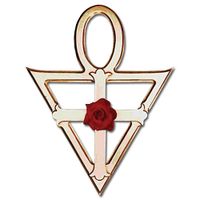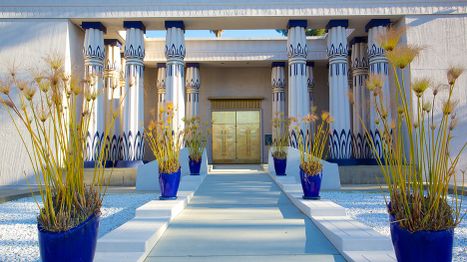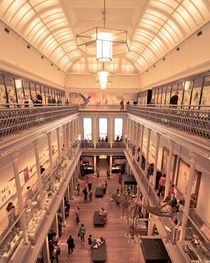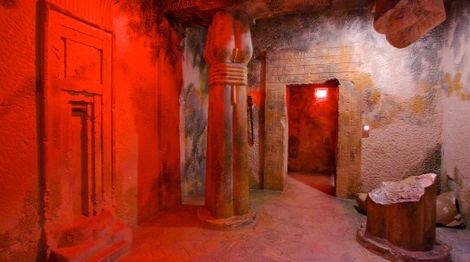Rosicrucianism
Rosicrucianism • Theosophy • Thelema • Wicca Scottish Rite Freemasonry Francis Dashwood and the Hellfire Club |
Rosicrucianism is a philosophical secret society, said to have been founded in late medieval Germany by Christian Rosenkreuz. It holds a doctrine or theology "built on esoteric truths of the ancient past", which, "concealed from the average man, provide insight into nature, the physical universe and the spiritual realm." Rosicrucianism is symbolized by the Rosy Cross.
Between 1607 and 1616, two anonymous manifestos were published, first in Germany and later throughout Europe. These were Fama Fraternitatis RC (The Fame of the Brotherhood of RC) and Confessio Fraternitatis (The Confession of the Brotherhood of RC). The influence of these documents, presenting a "most laudable Order" of mystic-philosopher-doctors and promoting a "Universal Reformation of Mankind", gave rise to an enthusiasm called by its historian Dame Frances Yates the "Rosicrucian Enlightenment".
Rosicrucianism was more closely associated with Protestantism than Roman Catholicism and in particular, was most closely associated with Lutheranism. According to historian David Stevenson, it was also influential to Freemasonry as it was emerging in Scotland. In later centuries, many esoteric societies have claimed to derive their doctrines, in whole or in part, from the original Rosicrucians. Several modern societies, which date the beginning of the Order to earlier centuries, have been formed for the study of Rosicrucianism and allied subjects.
Origins
The Fama Fraternitatis presented the legend of a German doctor and mystic philosopher referred to as "Frater C.R.C." (later identified in a third manifesto as Christian Rosenkreuz, or "Rose-cross"). The year 1378 is presented as being the birth year of "our Christian Father," and it is stated that he lived 106 years. After studying in the Middle East under various masters, possibly those adhering to Sufism or Zoroastrianism, he was unable to spread the knowledge he had acquired to any prominent European figures. Instead, he gathered a small circle of friends/disciples and founded the Rosicrucian Order (this can be deduced to have occurred in 1407).
During Rosenkreuz's lifetime, the Order was said to consist of no more than eight members, each a doctor and a sworn bachelor. Each member undertook an oath to heal the sick without payment, to maintain a secret fellowship, and to find a replacement for himself before he died. Three such generations had supposedly passed between c.1500 and c.1600, a time when scientific, philosophical and religious freedom had grown so that the public might benefit from the Rosicrucians' knowledge so that they were now seeking good men
Rosicrusian Egyptian Museum
Architecturally inspired by the Temple of Amon at Karnak, it houses the largest collection of Egyptian artifacts on exhibit in western North America -- including objects from pre-dynastic times through Egypt's early Islamic era. It is located at
- 1660 Park Avenue, San Jose CA 95191
It is open Wednesday through Sunday.
- Rosicrucian Egyptian Museum, San Jose, CA
A Personal Note from Robin
I have visited this museum multiple times; it is magnificent. If you ever get to San Jose, California you should definitely plan on spending a day visiting this marvelous museum.
External links
- Accessible magazine (2006): The Portugal Code: the Knights Templar, the Rosicrucian Order, and the Holy Grail
- Alchemy Web Site (The): Rosicrucianism
- Rosicrucians in the Catholic Encyclopedia
- 2005 International Conference – Spiritual filiation or doctrinal conflicts in modern Rosicrucian movements
- Orthodox America: The Rosicrucians
- Reverse Spins: The Mysterious Rosicrucian...
- Rosie: Speculum Sophicum Rhodo-Stauroticum
- What is Rosicrucianism all about? on "The Straight Dope"
- textfiles.com – Occult (The): Rosicrucianism
- Secret Symbols of the Rosicrucians in hi-rez full color
Chat rooms • What links here • Copyright info • Contact information • Category:Root



